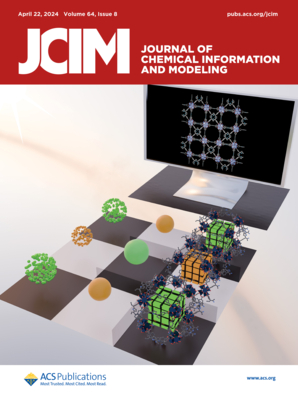数据驱动的卟啉几何洞察:非平面性和芳香性分析的可解释人工智能。
IF 5.6
2区 化学
Q1 CHEMISTRY, MEDICINAL
引用次数: 0
摘要
卟啉由于其应用相关性质对细微结构变化的敏感性,涉及许多非常不同的化学和生物过程。应用现代机器学习方法对于发现结构-活性关系非常有吸引力,可以用于为特定目的设计量身定制的卟啉。为了实现这一目标,通过对剑桥晶体学数据库中的7590种卟啉结构进行整理,建立了一套由425种金属卟啉组成的高质量卟啉集。使用数据驱动技术来分析非平面性和“结构芳香性”,可以验证该领域的常识,并发现新的关系。发现不同的非平面畸变对芳香性有不同的影响。与金属或轴向配体效应相比,非平面性对大环取代更为敏感,而褶边畸变主要受轴向配体尺寸和金属性质的影响。这些发现为卟啉的结构-性质关系提供了新的见解,为定向合成调整芳香性和非平面性提供了数据驱动的基础。尽管数据集有限,但这项工作证明了机器学习在揭示复杂化学趋势方面的价值。本文章由计算机程序翻译,如有差异,请以英文原文为准。
Data-Driven Insights into Porphyrin Geometry: Interpretable AI for Non-Planarity and Aromaticity Analyses.
Porphyrins are involved in numerous and very different chemical and biological processes, due to the sensitivity of their application-relevant properties to subtle structural changes. Applying modern machine learning methodology is very appealing for discovering structure-activity relationships that can be used for design of tailor-made porphyrins for specific purposes. For achieving this goal, a high-quality set consisting of 425 metal porphyrins was established via curation of 7590 porphyrin structures from the Cambridge crystallographic database. Using data-driven techniques for analyzing nonplanarity and "structural aromaticity" allowed for validation of common knowledge in the field as well as discovery of new relations. Aromaticity was found to be influenced differently by distinct nonplanar distortions. Nonplanarity is more sensitive to macrocycle substitutions than to metal or axial ligand effects, while ruffled distortions are dominated by axial ligand size and metal properties. These findings offer new insights into structure-property relationships in porphyrins, providing a data-driven foundation for targeted synthesis to tune aromaticity and nonplanarity. Despite data set limitations, this work demonstrates the value of machine learning in uncovering complex chemical trends.
求助全文
通过发布文献求助,成功后即可免费获取论文全文。
去求助
来源期刊
CiteScore
9.80
自引率
10.70%
发文量
529
审稿时长
1.4 months
期刊介绍:
The Journal of Chemical Information and Modeling publishes papers reporting new methodology and/or important applications in the fields of chemical informatics and molecular modeling. Specific topics include the representation and computer-based searching of chemical databases, molecular modeling, computer-aided molecular design of new materials, catalysts, or ligands, development of new computational methods or efficient algorithms for chemical software, and biopharmaceutical chemistry including analyses of biological activity and other issues related to drug discovery.
Astute chemists, computer scientists, and information specialists look to this monthly’s insightful research studies, programming innovations, and software reviews to keep current with advances in this integral, multidisciplinary field.
As a subscriber you’ll stay abreast of database search systems, use of graph theory in chemical problems, substructure search systems, pattern recognition and clustering, analysis of chemical and physical data, molecular modeling, graphics and natural language interfaces, bibliometric and citation analysis, and synthesis design and reactions databases.

 求助内容:
求助内容: 应助结果提醒方式:
应助结果提醒方式:


